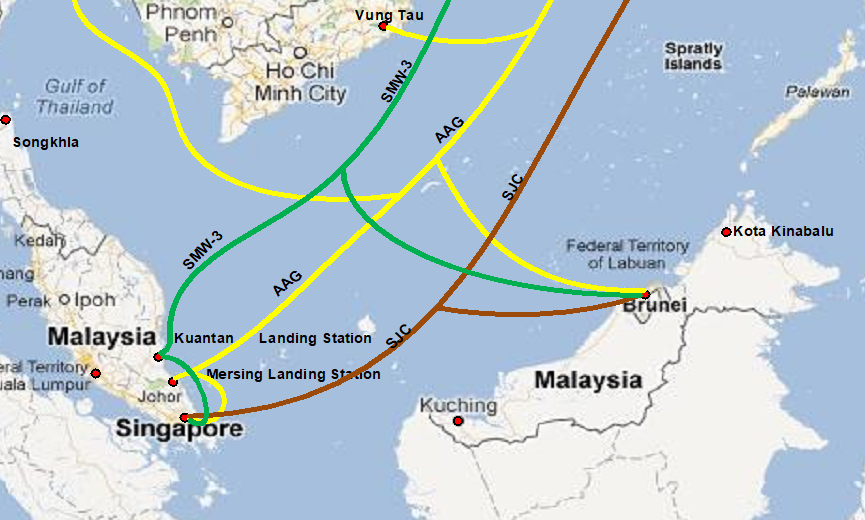
When you surf the Internet, you access a variety of platforms including YouTube, Netflix, Instagram – these are all ‘content.’ These content needs to be accessed from somewhere, in most cases, from the US or China region. However, now, these content are being hosted much closer to our region because countries like Singapore / Hong Kong have become the major hubs for the abovementioned content providers. The closer the hubs the better the performance (and user experience), due to the shorter distance to transmit the content/information.
Brunei must have a physical connectivity between the regions to derive and transmit the content, and this is where the submarine cable systems comes into play.
UNN are consortium owners of three submarine cable systems including South-East Asia - Middle East - Western Europe 3 (SE-ME-WE3), Asia-America Gateway (AAG), South-East Asia-Japan Cable (SJC). Why do we have 3 people may ask? To put it simply, it is for diversity, protection, and redundancy. This is to ensure that access to these content remain available to members of the public 24/7, 7 days a week.
Apart from the 3 submarine cables, UNN are also collaborating with its neighbouring partners to utilise other cable systems to add more diversity and reroute traffic when required i.e. to Singapore or Hong Kong. According to the NEC, approximately 99% of data being transferred around the world goes through submarine cables, rather than satellite.
Like any motor vehicle, there is a need for regular maintenance. Similarly, submarine cables are also subjected to regular planned maintenance. The consortium’s maintenance authority provides an annual maintenance schedule to be agreed with by all consortium members in order to prevent any clashes with any of the other 2 submarine cables at the same time.
So, what often triggers the need for maintenance? The submarine cables are laid down deep within the ocean’s seabed and therefore is susceptible to cuts or damages. Take for instance, when ships drop their anchors into the sea, they may unknowingly damage the submarine cables causing service disruptions to affected countries in the region. Other common causes include fishing, seaquake, typhoon, and other maritime weather conditions.
Repairing a cable is another whole different story. Whenever there is a need to perform a submarine cable repair or maintenance, the consortium would be alerted to troubleshoot the extent of the damages before a planned repair can be done. A cable repair ship would need to be deployed to locate the damaged section in the ocean and pull the cable up from the seabed for splicing and armour reapplication. Planned maintenance may vary from a week to 2 weeks, whereas repair may take a longer time due to the additional work required.
Although maintenance is important, having multiple routes i.e. different cable systems, gives UNN the ability to reroute traffic to other cables and maintain connectivity.
UNN is always trying to influence the maintenance windows to be outside of the peak hours but there are other factors at play such as priority levels and severity of damages to other cables. UNN has subject matter experts that are actively managing the network (24/7) and rerouting traffic to prevent any impacts to services in the country. UNN has recently announced on its social media account that there will be planned maintenance of the SJC submarine cable from the 6th to 11th November 2020 (dates may change subject to maritime weather conditions). With this knowledge sharing initiative, UNN hopes that the public can derive more meaningful explanations from future updates centered on submarine cable announcements.
Our main goal is to ensure that members of the public will always have access to content from the world. One of the ways that we are doing this is by ensuring that we have enough capacity in our network, and redundancy through the availability of other cables. UNN will continue to look at other solutions to improve the standards of connectivity in the country and improve the overall user experience.
back
